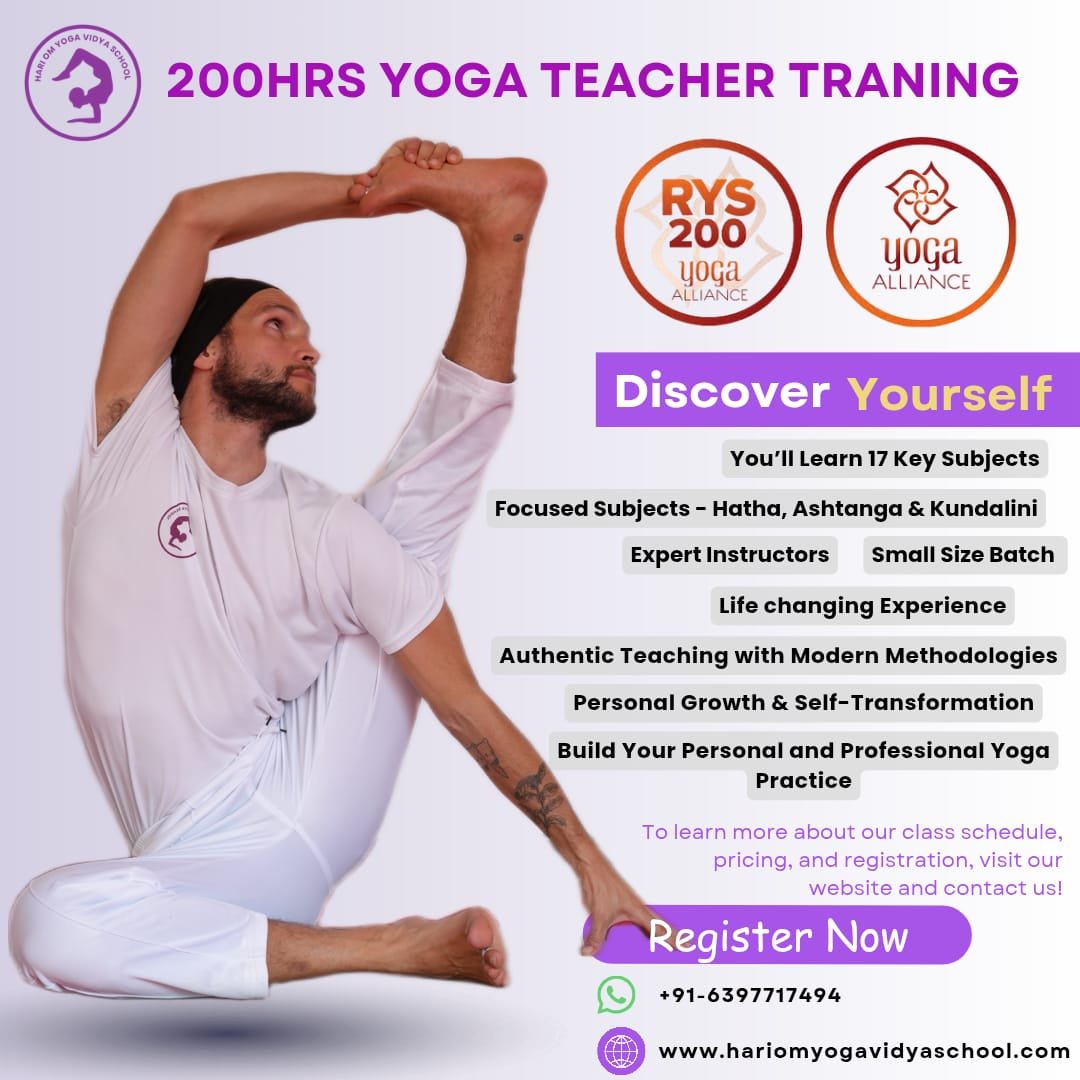Parsvatanasan – Intense Side Stretch Pose
What is Parsvatanasan?

Parsvatanasan is a very powerful pose or asana which can help you in correcting posture and also build confidence. If you regularly practice this asana, it can enhance your awareness. Although it is a powerful pose or asana, the steps are quite easy. This asana which is a part of the Ashtanga Primary series, includes bending your body forward, then inverting it, and finally stretching it. If you are interested in learning how to do it, you should read on.
The name of this Parsvatanasan is derived from the Sanskrit language where:
Parsva means ‘side’
Ott means ‘intense’
Tan means ‘stretch’
Asana means ‘pose’
When you add all these words, you get the name Parsvottanasana. Moreover, this pose or asana requires you to bend your body on one side and stretch it.
Read More: Why Is Kundalini Yoga Dangerous? The Truth About Its Risks and Rewards
How To Do The Asana?
- You can use a yoga mat and stand on it in the mountain pose or Tadasana.
- Spread your legs at least 3 to 4 feet apart.
- You have to turn your left foot outwards and your right foot at an angle of 45 degrees.
- While doing this asana, raise the arms on your side, making them parallel to the ground.
- Simultaneously, rotate your shoulders towards the inside and bring your palms toward the back, emulating a reverse prayer pose.
- Slowly open your chest muscles and stretch your shoulders toward the back.
- Inhale and try to elongate your spine.
- Exhale and bend your body forward.
- You have to use the pelvic region to push the hips backward and your body will automatically lean toward the front.
- Thereafter, you have to bring your chest closer to the shins, and touch your thighs with your abs.
- Hold the pose for a minute, inhale, and then lift the torso by exerting force with your heels on the floor.
- Go back to the position where you started, and release your arms and place them on the hips.
Modifications and Variations
- You can use the wall by placing the palms on the wall, while going forward, to ensure that the body is well-supported.
- You can keep blocks on the floor close to your foot to assist in maintaining the balance of the body.
- You can adjust the distance between the feet for confidence in the pose and then move towards more expansion.
- It is not necessary to do the Namaste, if you lose balance. You can place the palms on the floor instead, in front of you or hold the ankles of the front foot while going down in front fold.
- You can start with half pose while bending the torso, while looking upward straight to gain confidence.
Utthita Parsvottanasana is a variation, where you have to place your hands beyond your front legs and bend your torso. Your spine will get stretched more than the regular pyramid pose in this pose or asana.
Pyramid Pose with wrapped wrists is a variation of the side stretch pose, where you can hold your wrists with alternate hands.
You have to hold the asana for 5-10 breaths and gaze at the feet or practice Padagraye Drishti.
Safety Precautions Decoded
- When starting out in this pose, move your feet closer than they would be in general, so you can fold forward from the hips and still maintain the balance.
- Your energy comes from your lower body, so you have to exert force downward onto all four corners of your feet to generate stability.
- Bend the knees softly, rather than locking them. You have to activate the muscles in your hips, legs and abdomen, to hold you up.
- Keep your hips facing forward in the same direction, and do not allow them to get raised.
- Press your big toe and the inner heel of your back foot into the floor, and then lift the inner groin of your front leg within the pelvis.
- If you can’t comfortably reach the floor, place blocks under your hands.
- Do not lock the knees. Bend the knees only a little, if the hamstrings feel too stretched.
Who Can Do This Asana and Who Cannot?
If you are strong and fit, you can do this asana or pose easily. On the contrary, you should check out some contraindications.
- If you have any back or shoulder injury, do not hold the reverse prayer position. You can place both your hands on the hips.
- Pregnant women cannot do this pose or asana.
Read More: Everything You Need to Know About Kundalini Yoga Teacher Training
Benefits of Parsvatanasan
- Doing Parsvatanasan requires you to stretch a lot of muscle groups in your body including the abdominal muscles, chest muscles, glutes, and hamstrings. It gives you a full stretch.
- You can improve your body balance and awareness.
- While doing the intense side stretch pose, you have to bend your body forward with your head touching the knee. If you do the Parsvatanasan properly, you will be able to contract your abdominal cavity. This contraction massages the abdominal organs and improves the digestive system.
- You need to inhale deeply and fully expand your chest to do side stretch pose yoga. By practising Parsvatanasan regularly, you can increase your lung capacity and solve issues with respiration.
- You also need a high level of patience to do this. By practising patience, you bring your nerves in control. In fact, some people get their sense of calmness back after.
- If you suffer from Arthritis, this asana can prove to be great. Not only does Parsvottanasana practice reduces body pain but it also reduces stiffness. Many people with arthritis of wrists, elbows, shoulders, and the neck, can get relief as well.
- The body posture also gets improved by this Parsvatanasan pose or asana. If you have sagging, drooping and round shoulders, then you can do the intense side stretch pose and correct your posture very easily.
- If you are suffering from frequent menstrual cramps, then Parsvatanasan can reduce your back pain. When you bend your body forward, your abdominal region contracts, which stimulates the reproductive organs. This gives a good massage to the reproductive organs.
Deepen Your Yoga Practice with Hari Om Yoga Vidya School
Located in the heart of Rishikesh, Hari Om Yoga Vidya School is a place where ancient yogic wisdom meets modern teaching techniques. As a top yoga school in Rishikesh, we are committed to providing authentic, immersive yoga education in a peaceful, spiritual setting. Recognized as one of the best yoga schools in Rishikesh, we offer structured training programs designed to help you evolve in your practice, whether you are a beginner or an experienced yogi.
If you’re searching for a yoga school in Rishikesh that focuses on holistic learning, experienced teachers, and a supportive community, look no further!
Explore Our Yoga Teacher Training & Retreats
At Hari Om Yoga Vidya School, we offer a range of courses tailored for different levels of practitioners:
✅ 100-Hour Yoga Teacher Training in Rishikesh – A foundational course for those looking to begin their yoga journey.
✅ 200-Hour Yoga Teacher Training in Rishikesh – An internationally recognized certification for aspiring yoga teachers.
✅ 300-Hour Yoga Teacher Training in Rishikesh – Advanced training to deepen your practice and refine your teaching skills.
✅ 7-Day Yoga Retreat in Rishikesh – A rejuvenating escape into yoga, meditation, and self-discovery.
✅ 10-Day Yoga Retreats in Rishikesh – A transformative experience that blends yoga, relaxation, and Himalayan serenity.
Join us for a life-changing experience and become part of our global yoga family! 🌿✨





